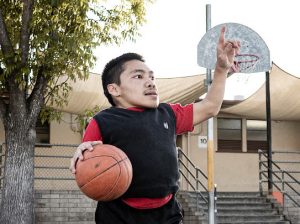The Calif. State University Board of Trustees is in the process of ironing out a budget strategy in the event that Gov. Jerry Brown’s Nov. tax initiative doesn’t pass.
Though no definite plans have been set, a host of general options to balance the budget within the CSU system were discussed at the CSU Board of Trustees’ July meeting.
One of the options is a Graduation Incentive Fee, which would be coupled with adding a “third tier” to CSU resident tuition, according to the CSU Board of Trustees Committee on Finance.
Under the Graduation Incentive fee, the board proposes an increase in tuition for “super seniors” who are in their fifth year or who have exceeded a set number of units generally needed for a bachelors degree.
“It’s not a direction the board wants to go, but it’s a possibility,” CSU Media Relations Specialist Erik Fallis said.
The incentive fee would have “helpful effects,” including an increase in graduation rates, which would free up admission slots for incoming CSU applicants, according to the Committee on Finance July agenda.
“In the case of students that maybe need a little motivation to finish up and get their degree and move on, we can look at look at tuition specific to that group of students,” Fallis said.
Approximately seven percent of students within the CSU system are “super seniors,” according to the CSU Board of Trustees. The “super seniors” are “potentially taking a spot of someone who is currently being denied due to enrollment cuts,” Calif. State Student Association Executive Director Miles Nevin said.
Pat Gaffney, a general manager at Costco, is paying for his youngest child’s tuition at San Diego State University. He says the incentive “makes sense.” Gaffney’s youngest son, Chad, is an incoming freshman.
“We would definitely want our son to do everything he possibly can to get out in the four years,” Gaffney said. But Gaffney acknowledges that many students change their major, which may cause students to enroll in school for more than four years.
“You’re all pretty young. You’re going to school at 18, 19 years old and you’re not sure what you want to do. I changed my major personally three times,” Gaffney said, “and it took me six-and-a-half years.”
“They always tell us to take our time in school and now they’re punishing us for taking our time. That’s kind of messed up,” SDSU communications senior Joseph Atkins said.
It took Atkins a couple of years to figure out what he wanted to do. He says he initially failed all of his classes, but was able to bounce back. Atkins plans to graduate in May 2013.
Donovan Geiger, student affairs coordinator for The SDSU College of Engineering, says it’s typical for engineering students to take five or six years to graduate.
The engineering students usually take an average of 140 units, according to Geiger.
“Even if students take a typical 15-unit semester, they’re going to graduate in more than four years. It’s extremely tough,” Geiger said.
Geiger says engineering students who do graduate within the four years usually take about 18 units per semester, including summer school.
The “third tier” approach to the proposed tuition fee structure would include an extra per-unit charge for students taking more than 16 units, according to the Committee on Finance July agenda.
However, the Board of Trustees discussed exceptions and flexibility within the budget strategy, according to Fallis. Fallis says that the Board of Trustees understands that some programs take longer than four years and will take such programs into account.
More details are expected to be released in Sept. after the CSU Board of Trustees revisits the budget strategies.









